Table of Contents
If you’ve noticed that your furry friend could use a little extra oomph in their daily exercise routine, then a weighted vest might just be the solution. While it may seem unconventional, a weighted vest can provide numerous benefits for your canine companion. From increasing muscle strength to improving endurance, this simple yet effective accessory can help your dog reach their fitness goals and stay in tip-top shape. So, why wait? Discover why your dog needs a weighted vest and unleash their full potential today.
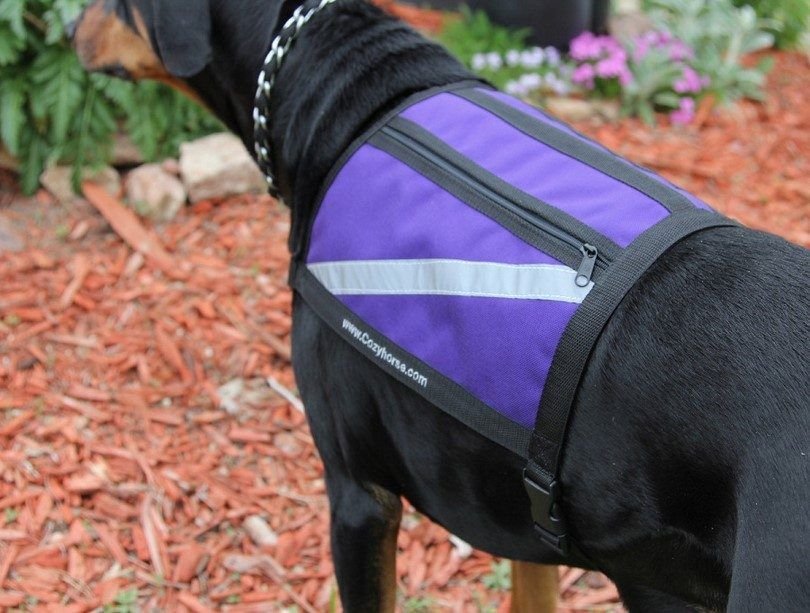
Benefits of Using a Weighted Vest for Dogs
Improves Physical Fitness
Using a weighted vest for your dog can be a great way to improve their physical fitness. Just like humans, dogs need regular exercise to stay healthy, and adding extra weight to their vest can increase the intensity of their workouts. The added resistance from the vest helps to build strength and endurance, as well as improve cardiovascular fitness. Whether you’re going for a walk, a jog, or engaging in more intense training activities, a weighted vest can challenge your dog’s muscles and help them reach their fitness goals.
Promotes Mental Stimulation
In addition to physical fitness, using a weighted vest can also provide mental stimulation for your dog. Dogs are intelligent creatures that need mental exercise as much as they need physical exercise. The added weight from the vest can make their walks or training sessions more challenging and engaging, as they have to focus on their movements and balance. This extra mental stimulation can help prevent boredom and keep your dog mentally sharp and content.
Aids in Behavioral Training
Weighted vests can also be a valuable tool in behavioral training for dogs. The added weight provides a calming effect for some dogs, which can help reduce anxiety and hyperactivity. It can also help provide a sense of security and confidence, making your dog feel more grounded and focused during training sessions. This can be particularly beneficial for dogs with behavioral issues, as the weighted vest can help them feel more secure and in control.
Choosing the Right Weighted Vest for Your Dog
Consider the Size and Weight of Your Dog
When choosing a weighted vest for your dog, one of the most important factors to consider is their size and weight. The vest should fit snugly but comfortably, without restricting their movement. It’s important to choose a vest that is specifically designed for your dog’s size to ensure a proper fit.
Check for Proper Fit and Comfort
In addition to size and weight, it’s also crucial to check for proper fit and comfort. The vest should have adjustable straps to ensure it can be securely fastened without causing discomfort or chafing. Make sure the vest doesn’t rub against your dog’s skin or restrict their breathing in any way. It’s important to choose a vest made from durable, breathable materials that won’t cause any discomfort or irritation to your dog.
Evaluate the Design and Construction
When choosing a weighted vest for your dog, it’s worth considering the design and construction of the vest. Look for a vest that is well-made, with reinforced stitching and high-quality materials. This will ensure that the vest can withstand the rigors of your dog’s activities and will last for a long time. Opt for a vest with evenly distributed weight pockets to ensure that the weight is balanced and doesn’t cause any strain on your dog’s body.
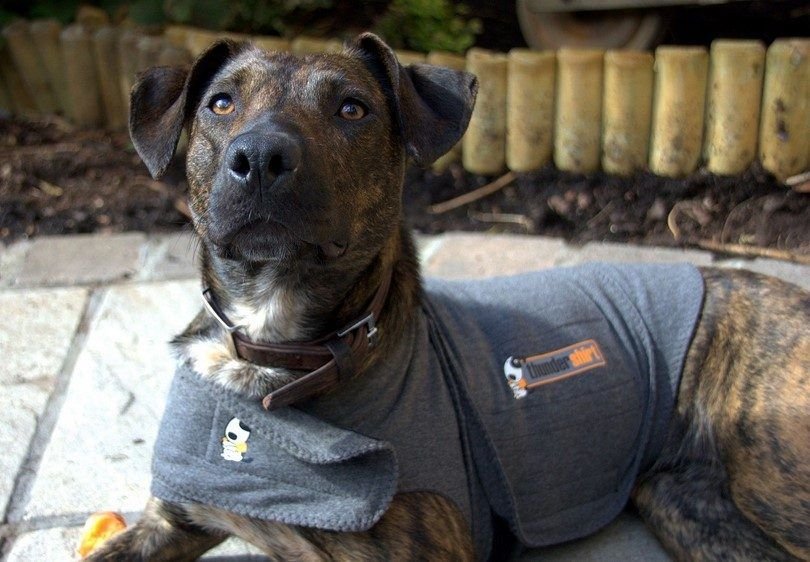
Introduction Process to Weighted Vest
Introduce the Vest Gradually
Once you have chosen the right weighted vest for your dog, it’s important to introduce it gradually. Start by letting your dog sniff and explore the vest before putting it on them. This will help them become familiar with the vest and associate it with positive experiences. Remember to be patient and go at your dog’s own pace. Some dogs may take to the vest right away, while others may need more time to adjust.
Allow Your Dog to Get Familiar with the Vest
Before fully securing the vest on your dog, allow them some time to get used to the feeling of wearing it. Start by putting the vest on them for short periods of time, gradually increasing the duration as they become more comfortable. Use positive reinforcement such as treats and praise to reward and encourage your dog during this process.
Offer Treats and Positive Reinforcement
Throughout the introduction process, it’s important to offer treats and positive reinforcement to make the experience enjoyable for your dog. Reward them with treats and praise when they are calm and relaxed while wearing the vest. This will help create a positive association with the vest and make it more likely that your dog will enjoy wearing it in the future.
Determining the Appropriate Weight
Consult with a Veterinarian
Before starting your dog on a weighted vest training program, it’s essential to consult with a veterinarian. They will be able to assess your dog’s health and fitness level and provide guidance on the appropriate weight to start with. A veterinarian can also advise on any specific considerations based on your dog’s breed, age, or health conditions.
Consider Age, Health, and Fitness Level
When determining the appropriate weight for your dog’s vest, consider their age, health, and fitness level. Younger and more active dogs may be able to handle a slightly heavier vest, while older dogs or dogs with health issues may need a lighter weight. It’s important to start with a weight that is comfortable for your dog and gradually increase it over time.
Start with a Lighter Weight and Gradually Increase
To ensure your dog’s safety, it’s best to start with a lighter weight and gradually increase it as they build strength and endurance. Begin with a weight that is around 5-10% of your dog’s body weight, and monitor their reaction and behavior. If your dog is handling the weight well and showing no signs of distress, you can gradually increase the weight in small increments.
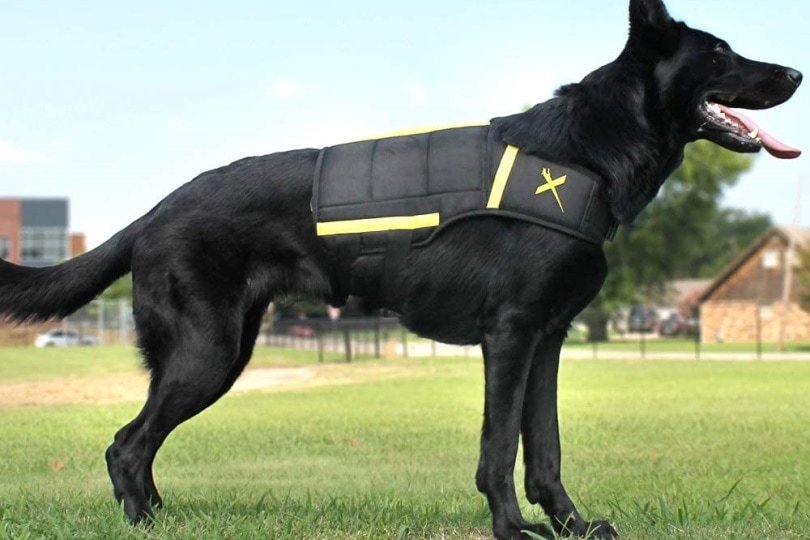
Training Exercises with a Weighted Vest
Short Walks and Hiking
One of the simplest ways to incorporate a weighted vest into your dog’s exercise routine is through short walks or hikes. Start with shorter distances and gradually increase the duration and intensity of the walks as your dog becomes more comfortable. The added weight of the vest will make each step more challenging and help improve their fitness levels.
Stair Climbing
Stair climbing is another great exercise to do with your dog while they are wearing a weighted vest. It helps build strength in their leg muscles and provides a cardiovascular workout. Start with a few flights of stairs and gradually increase the number of repetitions as your dog becomes more fit.
Fetch and Retrieval Games
Playing fetch and retrieval games with your dog while they are wearing a weighted vest is a fun and effective way to engage their muscles and provide mental stimulation. The added weight will make the activity more challenging and help improve their overall fitness. Use a weighted ball or toy for added resistance and encourage your dog to run and retrieve it during playtime.
Obstacle Course Training
For more advanced training, you can set up an obstacle course in your backyard or at a local park. Incorporate ramps, tunnels, hurdles, and balance beams to challenge your dog’s strength, agility, and coordination. The weighted vest will add an extra level of difficulty, making the training even more effective.
Precautions and Safety Tips
Never Exceed the Recommended Weight
It’s important to remember that you should never exceed the recommended weight for your dog’s vest. Using a weight that is too heavy can put unnecessary strain on their muscles and joints, leading to injuries. Always start with a lighter weight and consult with your veterinarian before increasing it.
Monitor Your Dog’s Body Language and Behavior
While using a weighted vest, it’s crucial to closely monitor your dog’s body language and behavior. If you notice any signs of fatigue, discomfort, or distress, stop the activity immediately and remove the vest. Your dog’s well-being and safety should always be your top priority.
Provide Ample Water and Rest Breaks
During exercise sessions with a weighted vest, make sure to provide your dog with ample water breaks and rest periods. The added weight can increase their body temperature and make them more prone to dehydration. Regular breaks will allow them to cool down, drink water, and recover before continuing with the activity.
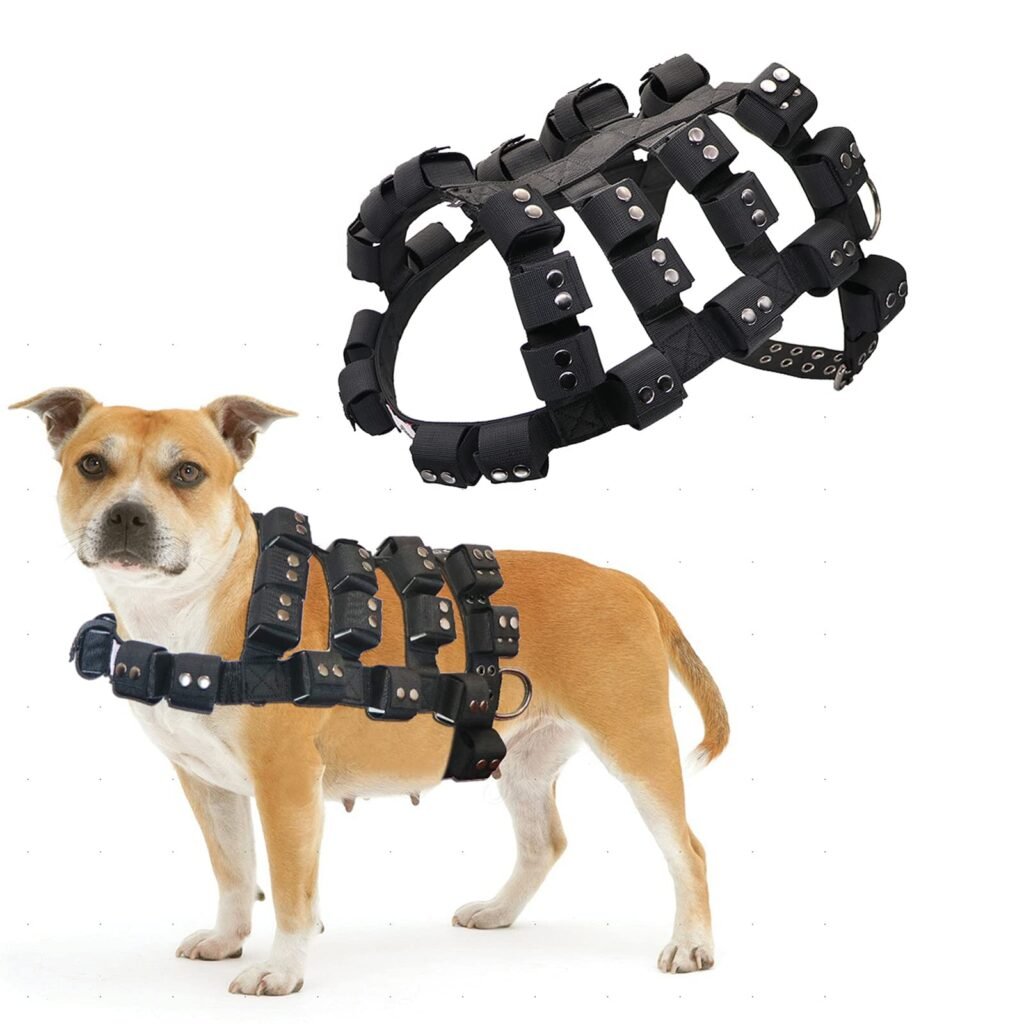
Additional Accessories for Enhanced Benefits
Use of Dog Harness
Using a dog harness in conjunction with a weighted vest can provide additional benefits. A harness helps distribute the weight more evenly across your dog’s body, reducing the strain on their neck and back. It also provides better control and stability during walks or training sessions.
Attachables for Added Resistance
Some weighted vests come with attachable pockets or pouches that can be filled with additional weight. These attachables allow you to gradually increase the weight as your dog becomes stronger and more fit. They offer versatility and customization, ensuring that your dog’s training routine continues to challenge them.
Reflective Strips for Visibility
If you plan to exercise with your dog outdoors, especially during low-light conditions, consider a weighted vest with reflective strips. These strips make your dog more visible to drivers and other pedestrians, enhancing their safety during walks or runs.
Benefits for Specific Dog Breeds or Conditions
Muscular and Working Breeds
Weighted vests are particularly advantageous for muscular and working breeds such as German Shepherds, Doberman Pinschers, and Rottweilers. These breeds have a natural inclination for physical activity and can benefit from the additional resistance provided by a weighted vest. It helps them build strength and endurance, making them more capable in their working roles.
Senior and Arthritic Dogs
Senior dogs or those with arthritis can also benefit from using a weighted vest. The added weight can help maintain muscle mass and improve joint stability, which is important for managing arthritis symptoms. However, it’s crucial to consult with your veterinarian to ensure that the weight is appropriate for your dog’s condition.
Overweight Dogs
For overweight dogs, using a weighted vest can aid in weight loss and overall fitness. The added weight increases caloric expenditure and encourages more intense physical activity. However, it’s important to monitor your dog’s progress and consult with a veterinarian to ensure they are losing weight in a healthy and safe manner.
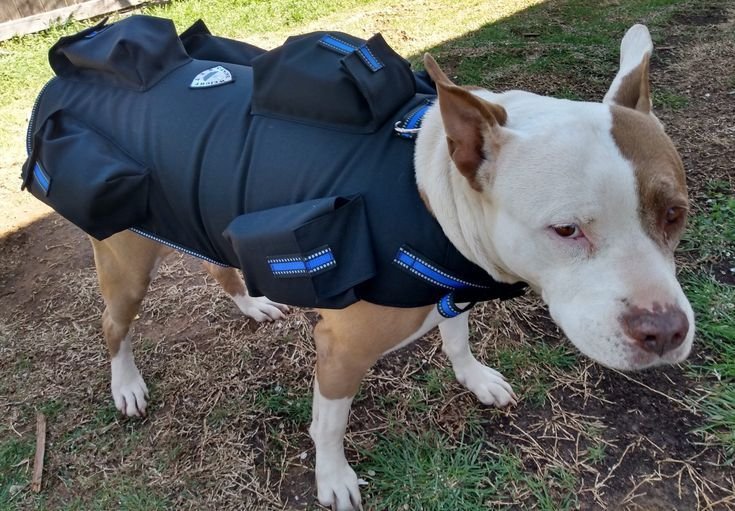
Frequently Asked Questions (FAQs)
What is the purpose of a weighted vest for dogs?
A weighted vest for dogs serves multiple purposes. It improves physical fitness by adding resistance to their exercise routine, promotes mental stimulation, aids in behavioral training, and can provide additional benefits based on specific dog breeds or conditions.
Is a weighted vest suitable for all dogs?
While weighted vests can be beneficial for many dogs, it’s important to consider your dog’s individual needs and consult with a veterinarian. Certain factors such as age, health, and fitness level should be taken into account to ensure the safety and effectiveness of using a weighted vest.
How often should a dog wear a weighted vest?
The frequency of using a weighted vest will depend on your dog’s fitness level, age, and overall health. Start with shorter sessions and gradually increase the duration as your dog becomes more comfortable and fit. It’s essential to monitor your dog for any signs of fatigue or discomfort and adjust the frequency accordingly.
Conclusion
Using a weighted vest for your dog can have numerous benefits, from improving physical fitness and promoting mental stimulation to aiding in behavioral training. By choosing the right vest, introducing it gradually, and determining the appropriate weight, you can safely and effectively incorporate a weighted vest into your dog’s exercise routine. Remember to always prioritize your dog’s well-being, monitor their body language and behavior, and consult with a veterinarian to ensure the best possible outcomes. So why not give your dog the extra challenge and stimulation they need with a weighted vest? It’s a small investment that can lead to big rewards for both you and your furry friend.



